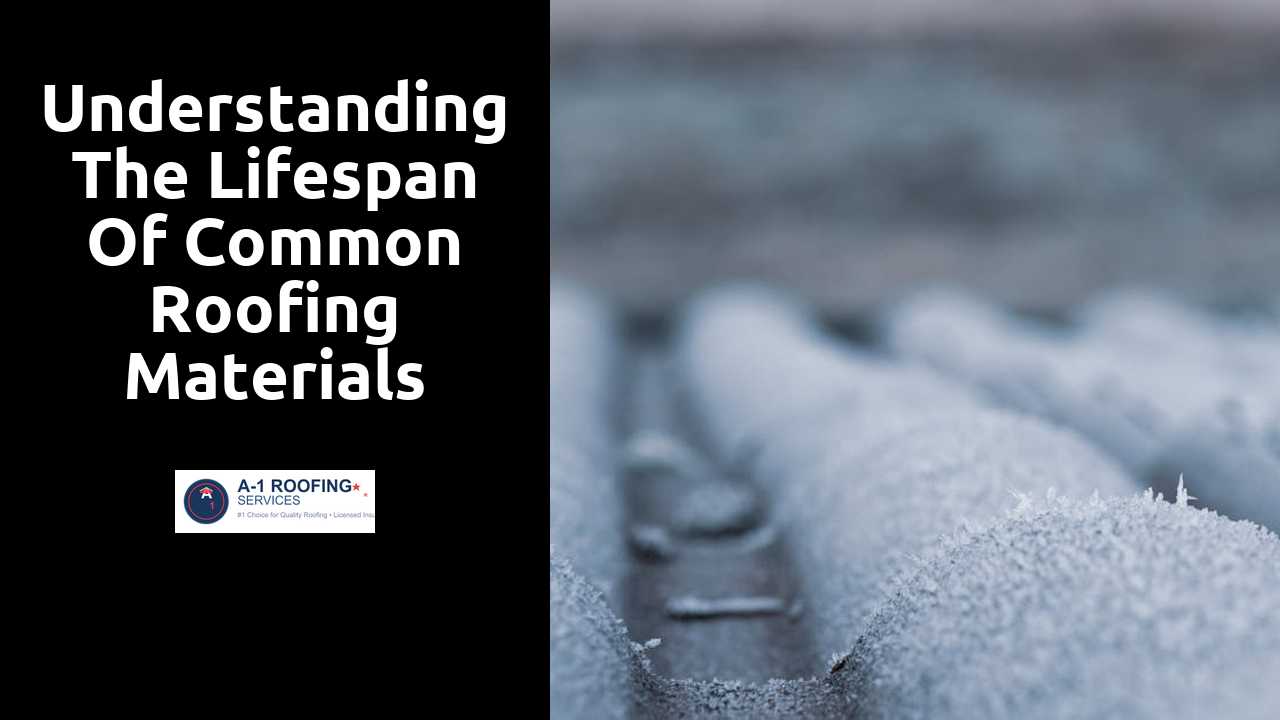
Understanding the Lifespan of Common Roofing Materials
Table Of Contents
Rubber Roofing
Rubber roofing, often made from ethylene propylene diene monomer (EPDM), has gained popularity due to its durability and versatility. This material is particularly resistant to UV rays, extreme weather conditions, and temperature fluctuations, making it an ideal choice for both residential and commercial buildings. Its lightweight nature simplifies installation, allowing for quick repairs or replacements without extensive structural modifications.
The lifespan of rubber roofing can span up to 30 years with proper maintenance. Regular inspections and timely repairs help to extend this longevity, ensuring the roof remains watertight and functional. Additionally, its resistance to mold and mildew reduces the need for frequent replacements, positioning rubber roofing as a sustainable option for property owners looking to minimize long-term costs.
This is an essential article for anyone looking to learn more about the topic.
Sustainability and Lifespan Insights
Rubber roofing offers a notable advantage when it comes to both sustainability and lifespan. Made from recycled materials, it reduces waste and minimizes the demand for new resources. Its lifespan typically ranges from 20 to 50 years, depending on the climate conditions and maintenance practices. With proper care, rubber roofs can withstand harsh weather, making them a long-lasting option for residential and commercial buildings alike.
The energy efficiency of rubber roofing also contributes to its sustainability profile. This material reflects heat, which can significantly reduce energy consumption for cooling during warmer months. Homeowners benefit from lower energy bills while contributing to a smaller carbon footprint. As more people seek environmentally friendly building solutions, rubber roofing emerges as a practical choice that combines durability with ecological responsibility.
Composite Roofing
Composite roofing represents a modern alternative to traditional materials, offering an impressive combination of durability and aesthetic appeal. Made from a blend of materials, including asphalt, fiberglass, and other synthetics, these roofs can effectively mimic the look of wood or slate without the associated maintenance concerns. Their lightweight structure facilitates easier installation while maintaining structural integrity, making them suitable for various architectural styles.
In addition to their visual benefits, composite roofing products exhibit excellent longevity, often surpassing the lifespan of conventional roofing options. Typically, these roofs can last up to 50 years or more, making them a cost-effective choice over time. Their resistance to cracking, warping, and fading contributes to their overall durability, providing homeowners with peace of mind against the elements.
Advantages in Longevity Compared to Traditional Materials
Composite roofing materials have quickly gained popularity due to their ability to outperform traditional roofing options such as asphalt and wood. The durability of composites stems from advanced formulations that combine various materials, resulting in a roof that can withstand harsh weather conditions. These roofs often come with warranties that extend for decades, giving homeowners confidence in their long-term investment.
Maintenance requirements for composite roofs are typically lower compared to traditional materials. They resist issues such as rot, cracking, and discoloration more effectively. This reduced need for repairs not only enhances lifespan but also minimizes costs over time, making composite roofing an economically sound choice for many building projects. The overall performance and durability make them a preferred option among homeowners looking for reliable solutions.
Green Roofing
As urban areas grow, the importance of green roofing becomes more evident. These roofs not only provide a natural habitat for wildlife but also help mitigate the urban heat island effect, lowering local temperatures. Additionally, they improve air quality and can capture and store rainwater, which reduces runoff and stress on drainage systems.
The lifespan of green roofs can vary depending on the choice of plants and the underlying systems used. Generally, with proper maintenance, these roofs can last anywhere from 30 to 50 years. The vegetation requires periodic care, including irrigation and fertilization, but the benefits are significant. Beyond just aesthetics, they contribute to energy efficiency in buildings by providing insulation and reducing the reliance on heating and cooling systems.
Lifespan and Benefits for Urban Environments
Green roofing systems provide a unique solution for urban areas where traditional roofing methods often fall short. These living roofs not only enhance aesthetic appeal but also improve insulation, contributing to significant energy savings. Additionally, the vegetation involved can absorb rainwater, reducing runoff and decreasing the burden on urban drainage systems. This sustainable approach enhances biodiversity within city landscapes, creating habitats for various species and promoting ecological balance.
The lifespan of green roofs tends to exceed that of conventional roofing materials, with proper maintenance extending their durability. Many systems can last up to 40 years when installed correctly, offering a long-term investment for property owners. Their ability to moderate temperatures in buildings adds further value, often resulting in reduced heating and cooling costs. As more cities embrace green infrastructure, the benefits these systems offer to urban environments become increasingly evident, illustrating their role in modern urban planning strategies.
Related Links
The Impact of Climate on Roofing Material SelectionThe Best Asphalt Shingles for Your Home